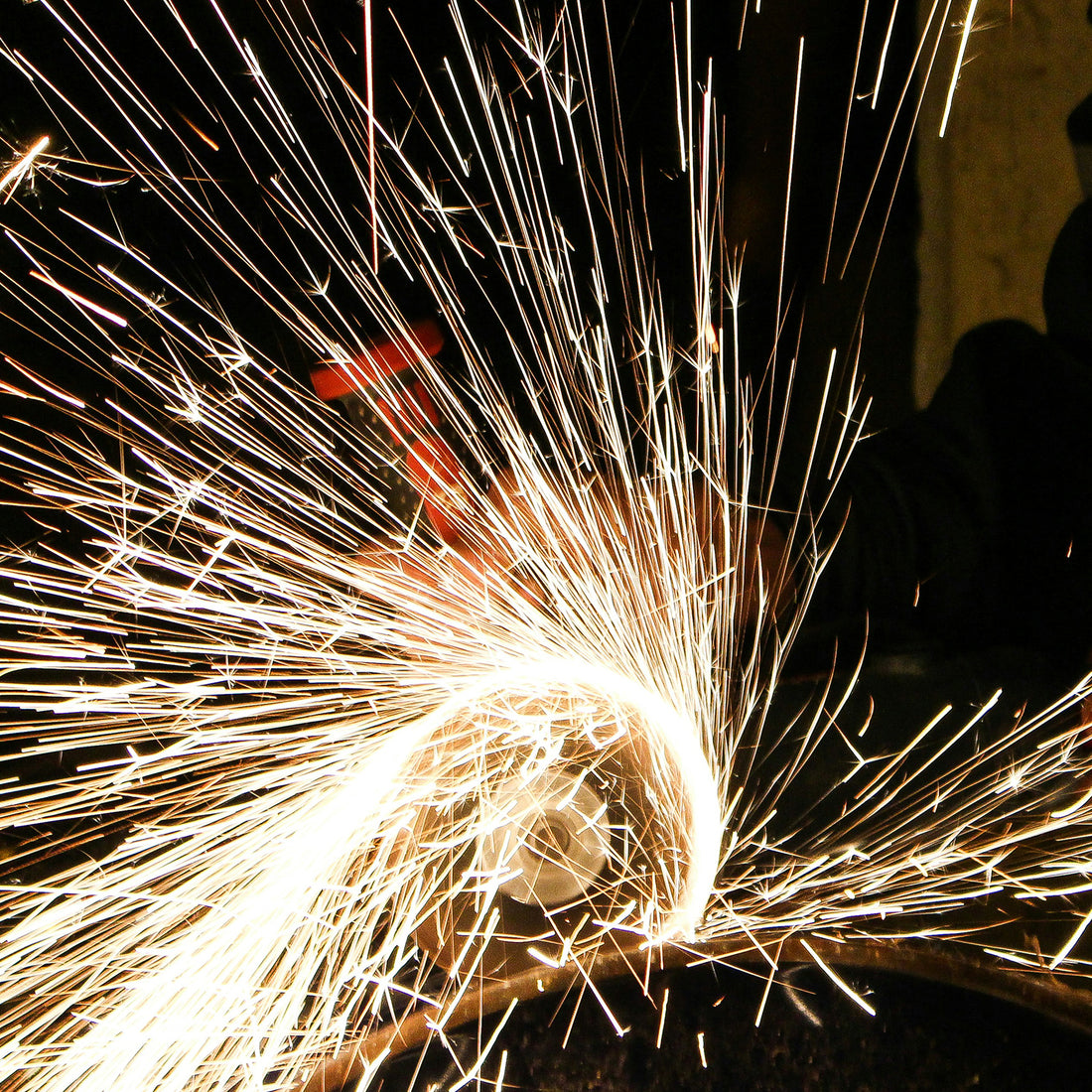The cutting wheel is a very effective tool for handling various metal materials. Proper use ensures that you can perform cutting tasks efficiently and safely. Below is a breakdown of how to properly use a cutting wheel, based on tips and techniques from different sources.
Selecting and preparing the cutting wheel
Selecting the cutting wheel
- Metal Type: Choose a cutting wheel that is appropriate for the type of metal you will be cutting. For example, wheels designed for stainless steel and aluminum alloys prevent binding and provide a cleaner cut, while reinforced wheels are ideal for hard metals.
- Specifications: Common cut-off wheels have diameters of 4.5 inches, 5 inches, etc. Make sure the wheel diameter matches the specifications of your angle grinder.
Installing the cutting wheel
- Make sure the angle grinder is turned off.
- Mount the cutting wheel onto the main shaft of the grinder, making sure it is securely fastened. Use appropriate tools (such as a wrench) to tighten the fixing screw to prevent the wheel from loosening during use.

Preparation before cutting
Review of tools and equipment
- Checking the cutting wheel: Make sure the cutting wheel is free of cracks, chips or other damage. A damaged wheel can explode during use, posing a hazard.
- Checking the Angle Grinder: Make sure the grinder is in good working order and undamaged. Check the cord and switch to confirm they are operational.
Safety equipment
- Wear appropriate protective equipment, including safety glasses, gloves, hearing protection, and a face mask. This equipment protects against flying debris and noise.
Steps to use the cutting wheel
Preparations
- Securing the Workpiece: Secure the metal piece to a stable work table using clamps or stands to prevent it from moving during cutting.
- Marking the cutting line: Mark the cutting line on the metal with a pencil or chalk to ensure an accurate cut.
Cutting Wheel Operation
- Turning on the angle grinder: Hold the handle of the grinder, turn on the equipment and allow it to reach maximum speed. Keep a firm grip to ensure safety during operation.
- Aligning with the cutting line: Align the cutting wheel with the line marked on the metal. Keep the cutting wheel perpendicular to the metal surface to avoid tilting.
- Applying Pressure: Apply even pressure while slowly moving the grinder along the marked line. Avoid applying too much pressure, as the efficiency and life of the cutting wheel depends on proper pressure.
- Avoid overheating: For longer cutting tasks, take periodic breaks to allow the cutting wheel and metal to cool, preventing overheating which can affect cut quality and accelerate cutting wheel wear.
Completion of the cut
- Stopping the Equipment: After completing the cut, turn off the grinder and wait for the cutting wheel to come to a complete stop before performing any other operations.
-
Clean up the work piece and area: Clean up debris and dust generated during cutting to keep the work area safe and tidy.

Recommended cutting wheel models
Here are some recommended cutting wheels with their main parameters to help you choose the right tool:
| Cutting wheel model | Diameter (inches) | Thickness (inches) | Maximum speed (RPM) | Suitable materials |
|---|---|---|---|---|
| Norton BlueFire R828 | 4.5 | 0.045 | 13,300 | Stainless steel, aluminum |
| DEWALT DW8062 | 4.5 | 0.045 | 13,300 | Ferrous metals |
| Makita B-10849 | 4.5 | 0.045 | 13,300 | Stainless steel |
| Bosch 2608602233 | 4.5 | 0.045 | 13,200 | Common metals |
| Metabo 631038000 | 4.5 | 0.045 | 13,500 | Steel |
Important Considerations
What to do
- Use the appropriate speed: Use the cutting wheel within the specified speed range to ensure safety and cutting effectiveness.
- Maintain stability of equipment and material: Use clamps to secure the metal piece, ensuring stability during cutting.
- Inspect tools regularly: Regularly inspect the cutting wheel and grinder to ensure they are in good condition.
What not to do
- Avoid excessive speed: Do not exceed the maximum speed of the cutting wheel to avoid damage.
- Do not use damaged wheels: Do not use cutting wheels that are damaged or worn, as they may pose a safety hazard.
- Do not cut unsuitable materials: Do not use the cutting wheel for materials for which it is not designed, as this may affect the quality of the cut and the life of the wheel.
Conclusion
Using a cutting wheel to cut metal requires proper preparation and following the correct steps. Choosing the right cutting wheel, installing it correctly, wearing protective equipment, and following the proper techniques will ensure efficient and safe cutting. By following these guidelines, you can improve the quality of your cut and extend the life of your tools.

